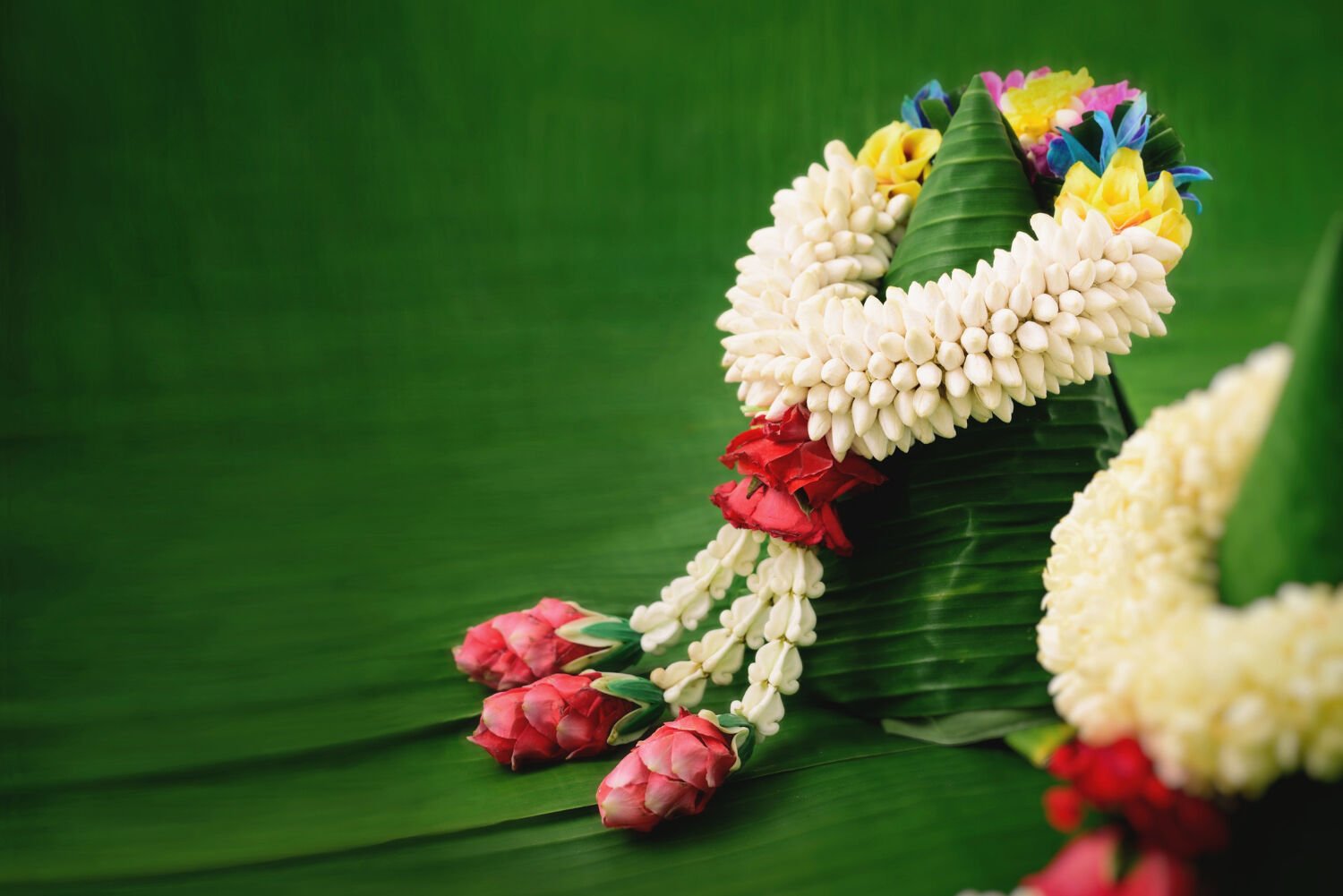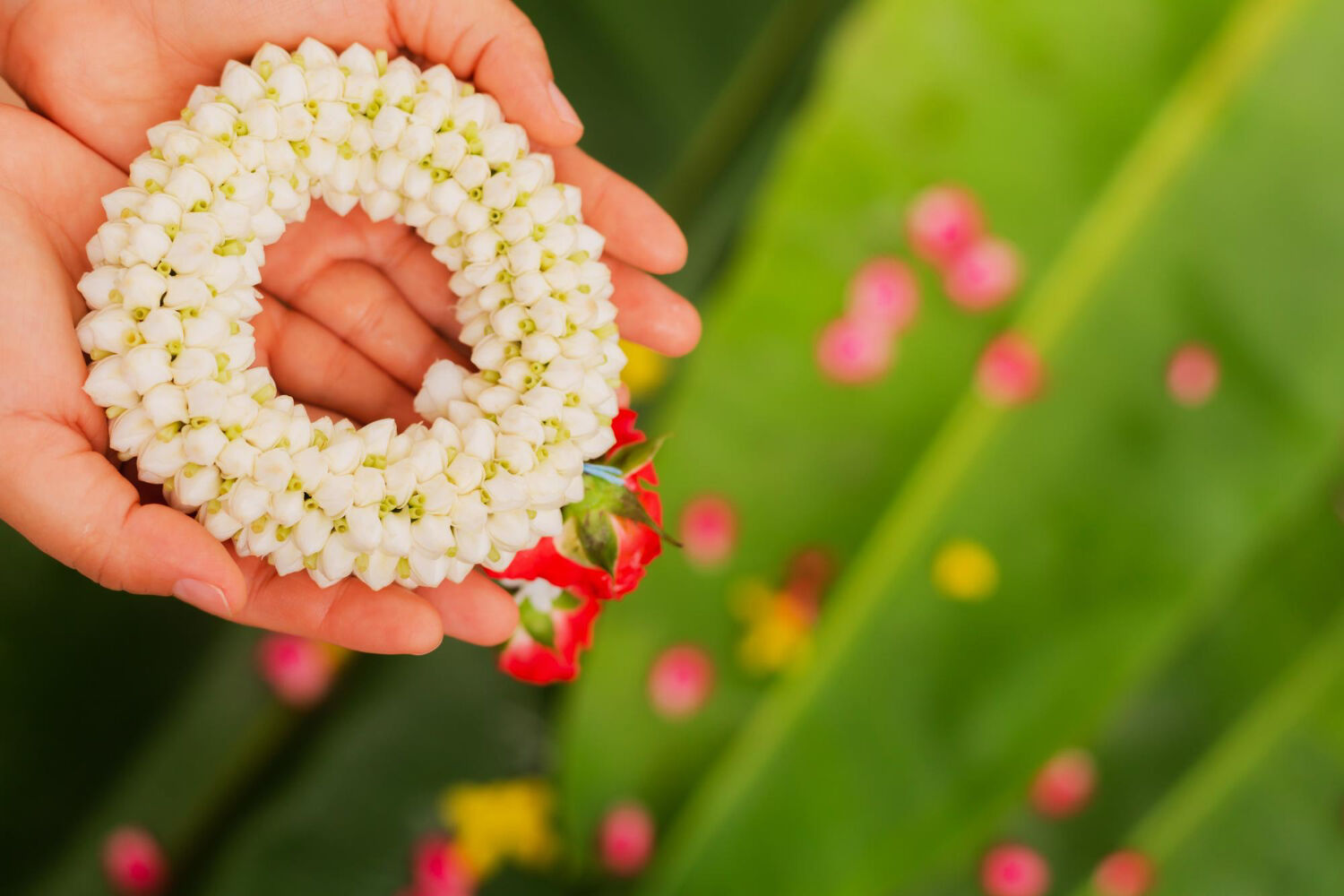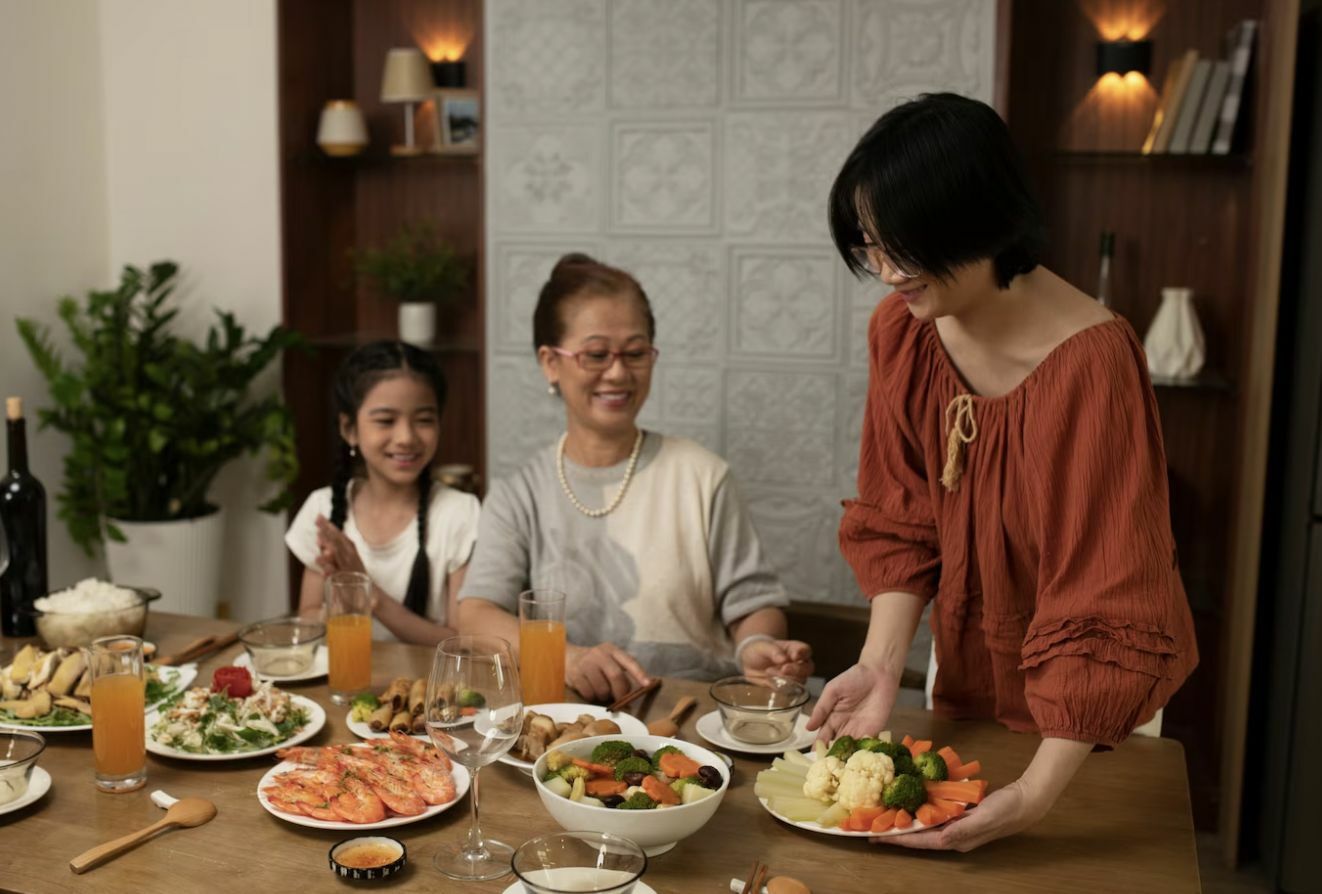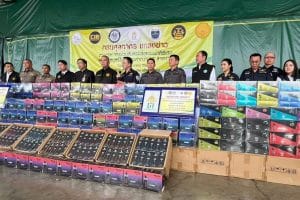What you need to know about Mother’s Day in Thailand

Mother’s Day – universally, it’s a day dedicated to honouring our life givers, our mothers. Whilst most Western countries, including the US and the UK, observe this day on the second Sunday of May, Thailand has anchored its celebration for mothers on a very special date, 12 August. But why is this day chosen, and how do Thai people celebrate Mother’s Day? Here’s what you need to know.
Mother’s Day Thailand key points to take
| Aspect | Details |
| Date of Mother’s Day Thailand | 12 August |
| Reason for Date | Birthday of Her Majesty Queen Sirikit, known as the “Mother of the Nation” |
| Queen Sirikit’s Contributions | Royal consort to King Bhumibol Adulyadej, charity work, honorary president of the Thai Red Cross |
| Symbolism | National devotion and importance of maternal figures |
| Decorations and Symbols | Royal blue flags, portraits of the Queen, public decorations, jasmine flowers |
| Spiritual Significance | Offerings to monks in early morning ceremonies |
| School Celebrations | Schools host ceremonies where mothers are honoured by their children |
| Significance | Symbol of love, respect, and unity, blending personal sentiments with national pride |
Why does Mother’s Day in Thailand fall on 12 August?

12 August might seem like any other day to those new to Thailand. However, it isn’t just any date in the Thai calendar. It’s the birthday of Her Majesty Queen Sirikit. She’s a beloved figure who had not only been the royal consort to King Bhumibol Adulyadej but was also revered as the “Mother of the Nation.”
Yes, the tradition of Mother’s Day in Thailand finds its roots in honouring Queen Sirikit. Known for her selfless charity work and her role as the honorary president of the Thai Red Cross, she embodied the virtues of nurturing, care, and service that are associated with mothers. To commemorate her birth and the values she represents, 12 August was established as a day to celebrate all mothers and maternal figures throughout Thailand.
Therefore, the annual arrival of 12 August is not simply another day. Instead, it’s a potent symbol of nationwide devotion. It’s a moment to pause and reflect on the influence of maternal figures in our lives. While it celebrates the Queen Mother’s birthday, it also highlights the importance of every mother in the country, making it a true double celebration in Thailand.
How is Mother’s Day celebrated in Thailand?
The celebration of Mother’s Day in Thailand is a unique display of love and respect, seamlessly blending tradition with modern customs. And, of course, the heart of this special day revolves around honouring mothers and celebrating family ties.
Royal blue and Jasmine blooms

In the lead-up to Mother’s Day, the Thai spirit is very visible. Blue flags, showcasing the Queen’s individual crest, stream from homes and businesses. The choice of colour isn’t random. In Thailand, each day of the week is associated with a specific colour. And Friday, the day of Queen Sirikit’s birth, is represented by blue.
The day isn’t just about blue flags, though. You may also see Thai citizens hanging up portraits of the Queen in an exuberant show of affection and loyalty. Public spaces, too, are adorned with stunning decorations and twinkling lights as the Queen’s birthday approaches. Local businesses participate in the celebrations as well, decking out their establishments with the Queen’s portraits, vibrant garlands, and colourful illuminations to signal the upcoming festivities and acknowledge the Queen’s contributions to Thailand.
In addition, Jasmine, a flower symbolising purity and grace, plays a central role in the celebrations. Whether displayed as blossoms or intricately woven into garlands, these fragrant flowers represent motherhood and maternal love. Therefore, it has become an integral part of the day’s gift-giving tradition. If you want to buy a flower for your mum on Thailand Mother’s Day, check out our new guide on it.
Honouring mums and making merits

Traditionally, children express their love and respect by presenting their mothers with jasmine garlands. As explained before, Jasmine symbolises purity and grace. That’s why it’s viewed as a perfect tribute to mothers. This delicate white flower is not only used in worship but also holds a special place in the country’s Mother’s Day celebrations.
Accompanying the floral gifts, children often perform a traditional gesture called the “Wai”. This involves pressing their palms together in a prayer-like manner and bowing to their mothers as a sign of reverence and gratitude. These customs underline the deeply rooted respect for mothers instilled in Thai culture.

Beyond these gestures of respect, Mother’s Day in Thailand is also a day for family gatherings and shared meals. It’s an opportunity for families, often scattered by the demands of modern life, to come together and celebrate the family’s matriarchs. Restaurants across Thailand often run special promotions, recognising the importance of this family-centred celebration.
Schools also participate in the festivities by hosting dedicated Mother’s Day ceremonies. On this occasion, mothers are invited to school and honoured by their children in an emotive ceremony filled with respect and gratitude. It’s a touching moment that often leaves mothers and children wiping tears from their eyes.
Additionally, offerings to monks form a meaningful part of the traditional Mother’s Day celebrations. Early in the morning, ceremonies are held to give offerings of food to Thailand’s saffron-robed Buddhist monks, enriching the day with spiritual significance.
Get involved, give it a personal touch

If you’re in Thailand on 12 August, be sure to participate! Try crafting a flower garland for your mother. All you need are jasmine flowers, which can be easily ordered from local markets. Involving the whole family in this act of love will make the day more special. Plus, it also adds a personalised touch to the gift. Thus, demonstrating just how much your mother means to you.
As the day closes, you’d find that Mother’s Day in Thailand isn’t just about celebrating motherhood. It’s a national symbol of love, respect, and unity, intimately weaving personal sentiments with national pride. No matter how you choose to celebrate, make sure the day radiates joy and conveys your deep appreciation for the mothers and other important women in your life.
Latest Thaiger’s videos on Thailand Mother’s Day
Similarity of Mothers Around the World | Thai Mother’s Day Special
If you want to take your mum out for a special meal, check out our article on the 10 perfect restaurants to celebrate Mother’s Day in Bangkok, Thailand.
Frequently asked questions about Mother’s Day in Thailand
1. How do you say Happy Mother’s Day in Thai?
To start, we have the traditional phrase “สุขสันต์วันแม่” (sùk-săn wan mâe), which means “Happy Mother’s Day.” It’s straightforward and heartfelt. Following that, there’s “ขอให้มีความสุขในวันแม่” (kăw hâi mee kwâam sùk nai wan mâe), which translates to “Wishing you happiness on Mother’s Day.”
2. What is the colour of Mother’s Day in Thailand?
White Color: In Thailand, white is customarily linked with Mother’s Day. People commonly wear white clothing, and there’s a tradition of tying white ribbons or using white jasmine flowers to symbolise purity and respect.
3. What symbol represents Mother’s Day?
Carnations: As the official Mother’s Day flower, carnations represent motherhood and the celebration of mothers globally. They also symbolize love and gratitude.
4. What is the flower for Mother’s Day in Thailand?
The flower linked with Mother’s Day in Thailand is jasmine. It symbolises a mother’s unconditional love.
Latest Thailand News
Follow The Thaiger on Google News:


























